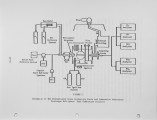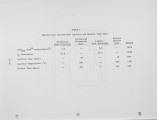| Title |
Standardized Flame/NonFlame, Coal/Non-Coal Ignition/Burnout Time Tests for Neat Pulverized Coals and their Slurries |
| Creator |
Reuther, James J. |
| Publisher |
University of Utah |
| Date |
1983 |
| Spatial Coverage |
Akron, Ohio |
| Abstract |
By comparing results from separate experiments with various combustors at The Pennsylvania State University Fuels and Combustion Laboratory and from the industrial combustion literature, a rather novel procedure for testing pulverized coal, coal-derivatives, and coalwater slurry fuels for their ignition and burnout characteristics without burning any coal or coal-water slurry fuel has been advanced. This non-coal procedure complements the noncombustion one (dTGA) that is widely-used in industrial practise. Moreover, some chemical insight is gained into the ignition mechanism of pulverized coal with this new method. |
| Type |
Text |
| Format |
application/pdf |
| Language |
eng |
| Rights |
This material may be protected by copyright. Permission required for use in any form. For further information please contact the American Flame Research Committee. |
| Conversion Specifications |
Original scanned with Canon EOS-1Ds Mark II, 16.7 megapixel digital camera and saved as 400 ppi uncompressed TIFF, 16 bit depth. |
| Scanning Technician |
Cliodhna Davis |
| ARK |
ark:/87278/s6fr004x |
| Setname |
uu_afrc |
| ID |
701 |
| Reference URL |
https://collections.lib.utah.edu/ark:/87278/s6fr004x |



























